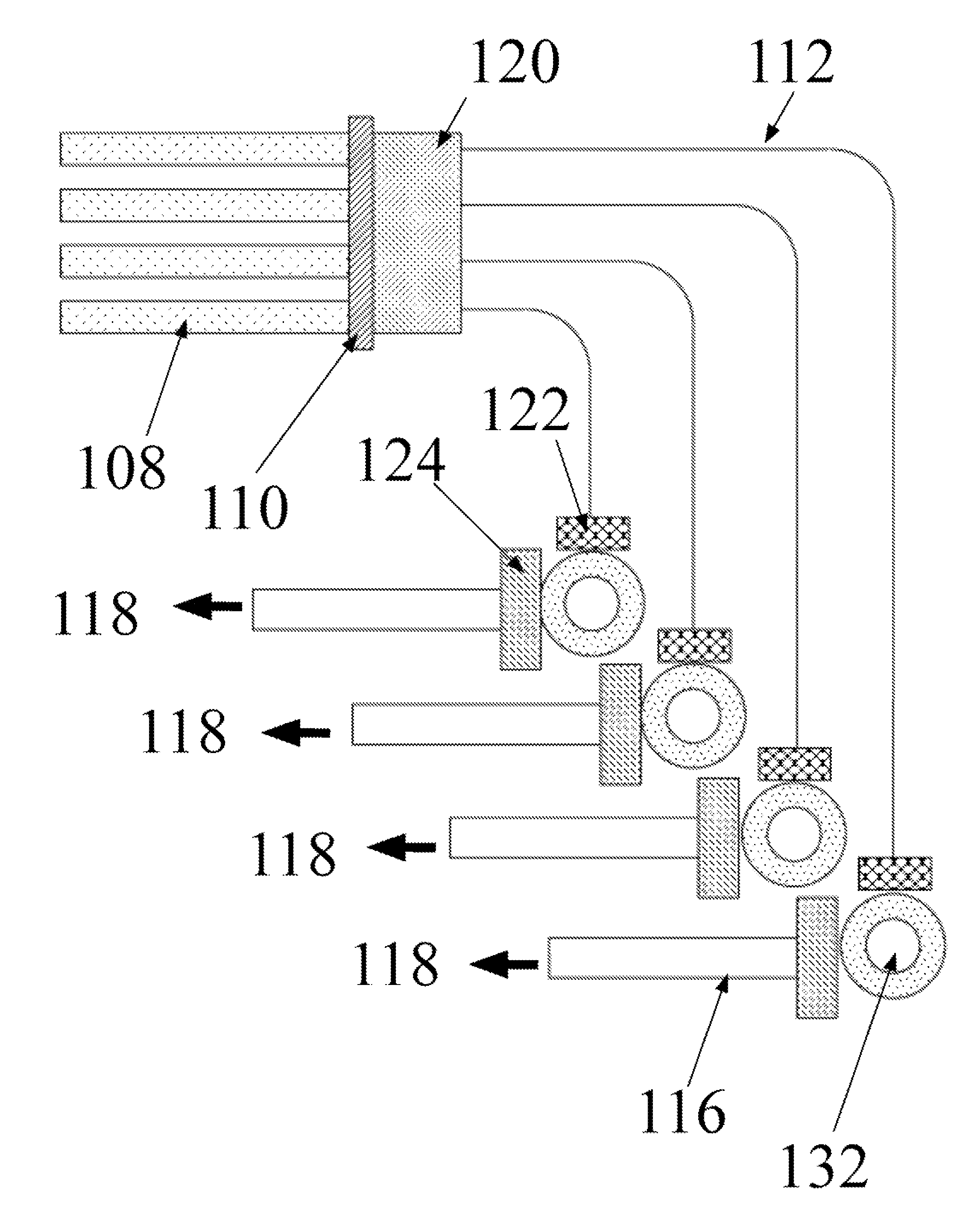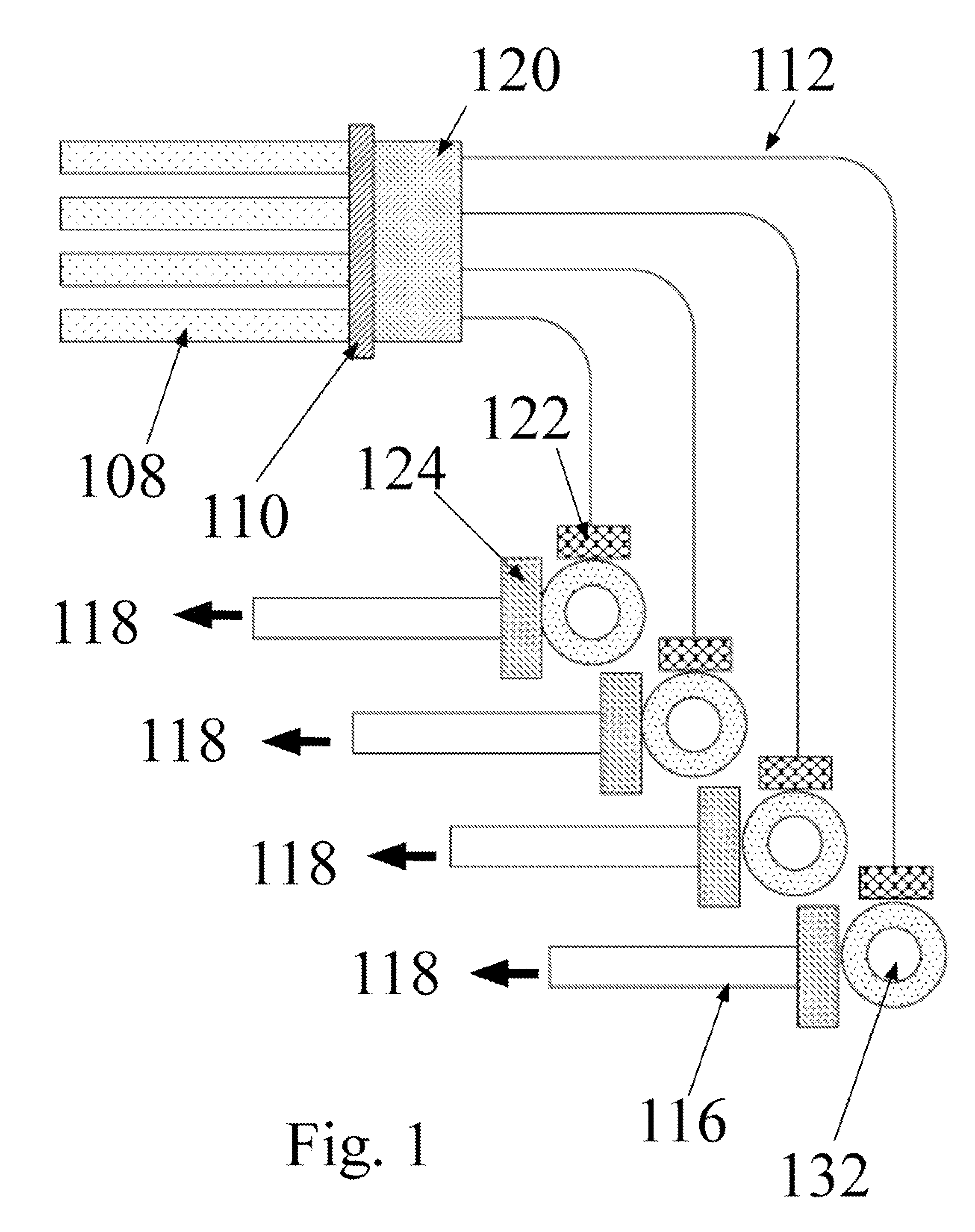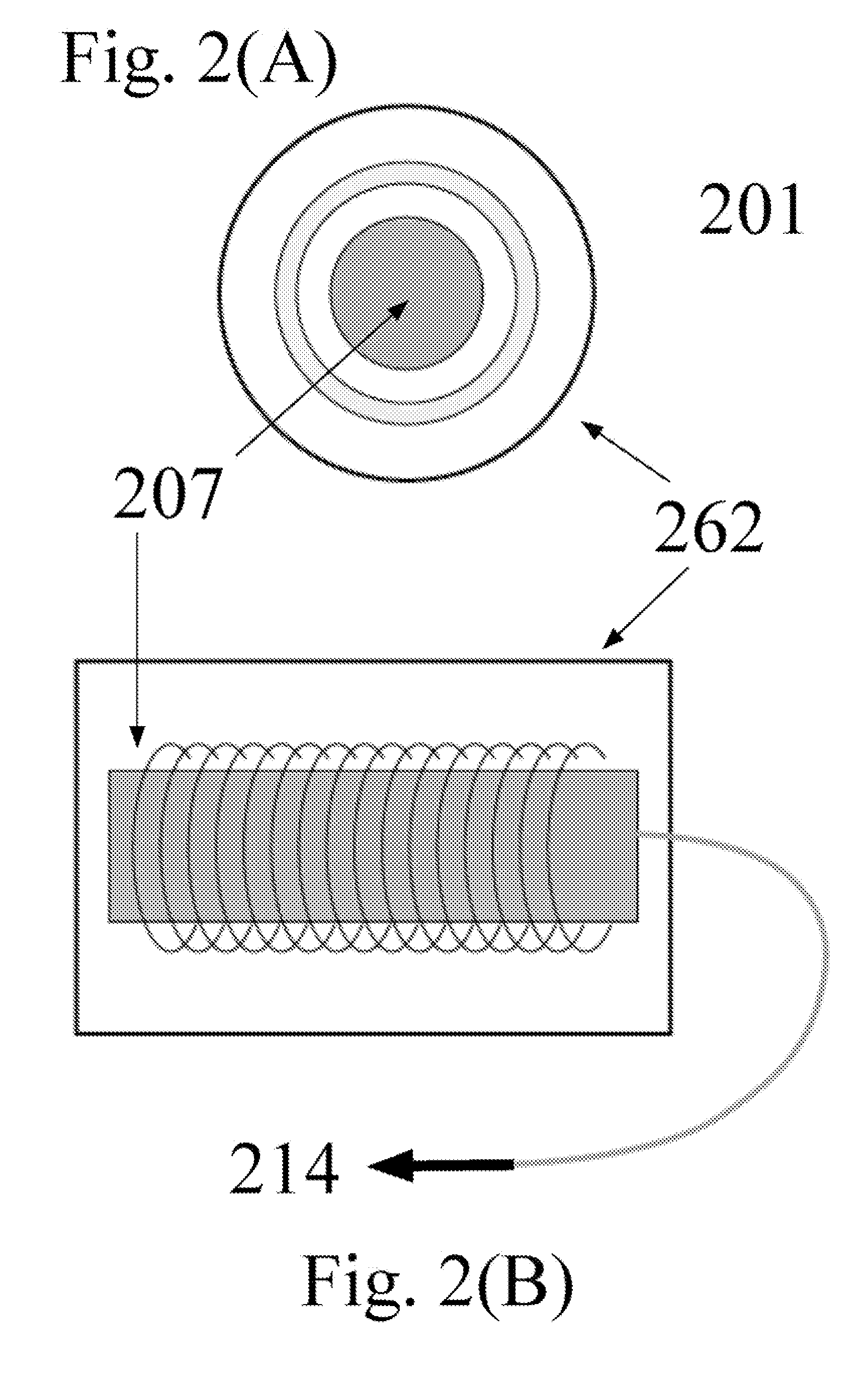Bioanalytical instrumentation using a light source subsystem
a light source and subsystem technology, applied in the field ofluminescence systems, can solve the problems of limited sensitivity, reproducibility and robustness, poor output collection efficiency, and broad-spectrum spontaneous emission, and achieve the effects of reducing heat generation, improving specificity, and improving sensitivity
- Summary
- Abstract
- Description
- Claims
- Application Information
AI Technical Summary
Benefits of technology
Problems solved by technology
Method used
Image
Examples
Embodiment Construction
[0054]The detection volume in the form of a well of fluid, a spot of fluid, a channel containing fluid or a reservoir attached to a channel containing fluid will all be referred to herein as the “detection volume”. The term “detection volume” can also refer to any of the afore mentioned constructs in which the reaction for detection occurs in freely diffusing solution, in a gel or polymer, attached to a surface, contained within a pore, or in some subsection of the entire well volume. As seen in FIG. 9, one example of the present invention comprises a plurality of lamps (908) with filters (910) for selecting the wavelength of choice, in conjunction with a device for coupling (920) the lamps into multiple optical fibers, multiple optical fibers for transferring the excitation light to the wells, adapters for coupling light from the fibers into the detection volumes (914) located in a microtiter plate (924) and for coupling fluorescence from the detection volumes into collection fiber...
PUM
| Property | Measurement | Unit |
|---|---|---|
| wavelength | aaaaa | aaaaa |
| size | aaaaa | aaaaa |
| wavelength | aaaaa | aaaaa |
Abstract
Description
Claims
Application Information
 Login to View More
Login to View More - R&D
- Intellectual Property
- Life Sciences
- Materials
- Tech Scout
- Unparalleled Data Quality
- Higher Quality Content
- 60% Fewer Hallucinations
Browse by: Latest US Patents, China's latest patents, Technical Efficacy Thesaurus, Application Domain, Technology Topic, Popular Technical Reports.
© 2025 PatSnap. All rights reserved.Legal|Privacy policy|Modern Slavery Act Transparency Statement|Sitemap|About US| Contact US: help@patsnap.com



